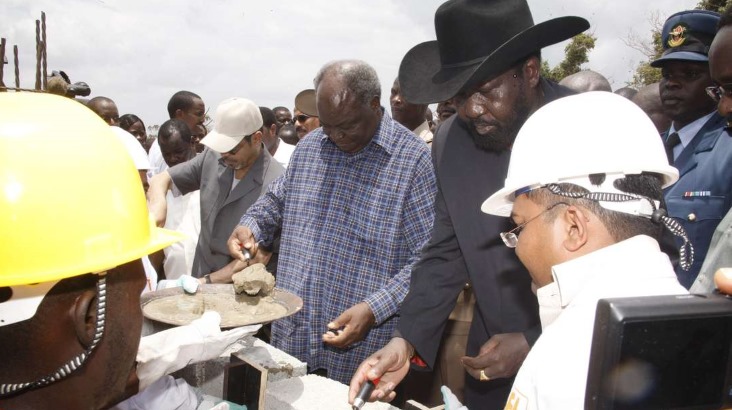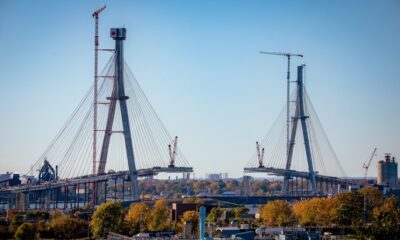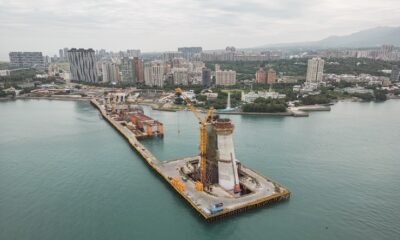Infrastructure
Why private investors stay away from State projects
Slow approvals of Public Private Partnerships usually puts off high quality investors.

Public sector bureaucracies have been blamed for the slow implementation of infrastructure projects in the country even as it emerges that intricate procedure for the government to approve projects is among the reasons many private investors stay away from State projects.
According to Lamu Port South Sudan, Ethiopia Transport (Lapsset) corridor chairman Francis Muthaura, the Public Private Partnership Act that was legislated in 2013 should be reviewed urgently to cut bureaucracy and speed up execution of projects.
“The problem is bureaucracy. [Public Private Partnership] takes too long to realise its objectives. The attention span for private sector is short, they just look for opportunities. But if you protract an investment opportunity the private sector gets discouraged and walks out,” Mr Muthaura said during a recent official function at the Kenya School of Government, Matuga.
He said that although many countries had made great strides due to proper execution of PPPs, Kenya was being left behind due to slow approvals that put off high quality investors.
“If you are oversensitive then you may never make any decision. On Lapsset where most of our projects are supposed to be implemented through PPP many of the proposals we have made have not taken off, so there is a problem,” the Lapsset chairman said.
Mr Muthaura however assured that construction of the Sh2.5 trillion Lapsset project remains on course with its completion still scheduled to take place by 2030.
The development that has been underway since March 2012 is a critical Kenya Vision 2030 project and its significant components include Lamu port, an 880 km Lamu-Ethiopia-South Sudan superhighway, a 1,710 km Lamu-Juba-Addis Ababa railway line, an oil refinery and a 2,240 km oil pipeline connecting oil fields in South Sudan to the refinery at the Lamu Port.
Other components of the project include construction of three resort cities at Isiolo, Lamu and Lokichoggio near Lake Turkana, construction of airports in the resort cities and development of associated infrastructure such as a 1,100MW power line and a 185 km water supply line.
READ: Chinese builders win praise from Kenyans for mega projects
Although Lapsset is a 20-year project, most of projects were expected to be completed by 2015 but this did not happen due to various reasons among them land acquisition challenges.
Several benchmarks have, however, been successfully completed. These include highways such as the one from Isiolo to Moyale. Kenya has also signed an agreement with a South African consortium to build a highway from Lamu to Isiolo, Mr Muthaura said.
Construction of the first three berths at the Lamu Port is currently ongoing, with the first berth expected to be complete by June, and the remaining two berths set for completion in 2020.
The Lapsset corridor project is expected to integrate the economies of Kenya, South Sudan and Ethiopia while opening up the region to global trade opportunities with emerging economies.
Like Mr Muthaura, President Uhuru Kenyatta has recently voiced his frustration with bureaucracy. During the EAC Heads of State Summit in Kampala, Uganda, last month, President Kenyatta urged governments in the region to ease the process of working with the private sector.
“I am a strong believer in PPP. But I have a problem of bureaucracy in government which frustrates our development partners,” he said.
He noted that expediting approvals of mega projects would show that the region is serious about fixing its infrastructure projects thereby attracting a big number of investors.
PPPs, which are locally defined under the Public Private Partnership Act 2013 (PPP Act), are arrangements between a contracting authority and a private party under which the private entity undertakes to perform a public function or provide a service on behalf of the contracting authority and is generally liable for risks arising from the performances of the function in accordance with the terms of the project.
READ: Work well underway on Lamu Port, first berth to open in June
Like Kenya, a growing number of countries have formally adopted a framework for public private partnerships in their laws.
Prior to the enactment of the PPP Act most projects were undertaken under the prevailing public procurement laws.
The enactment of the PPP Act and subsequent regulations under it sought to institutionalise the PPP process and establish organs such as the PPP Unit, the PPP Committee and the PPP Nodes.
Since the enactment of the PPP Act, the PPP laws have gone through a transformation over the years with the passing of regulations further providing clarity as to the PPP process in Kenya.
According to the Benchmarking PPP Procurement 2017, which was released recently by the World Bank, Kenya has a fairly robust PPP framework which largely supports many of the PPP projects currently in the pipeline, including the Lapsset corridor, Nairobi-Mombasa toll expressway O&M contract set to begin by end of this year, Kisumu Sea Port project and the Student Hostels PPP.












